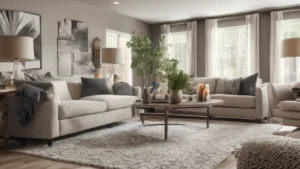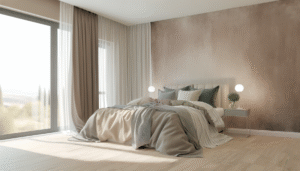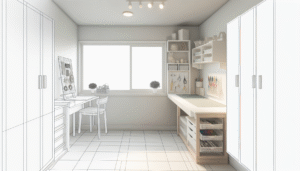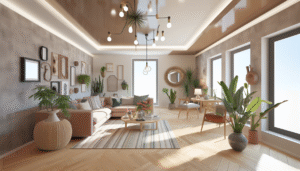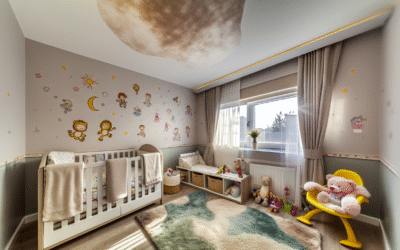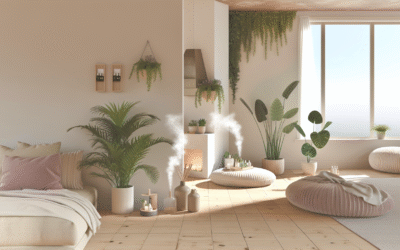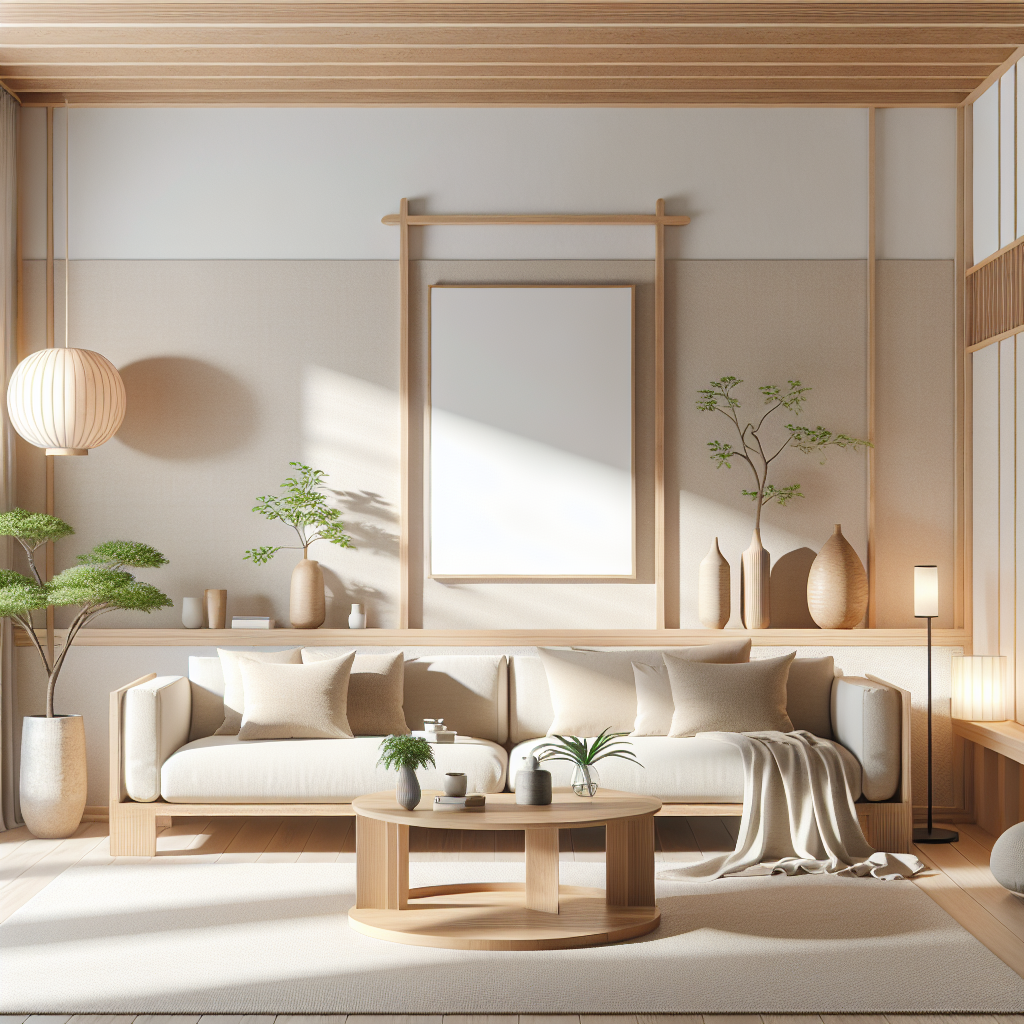
Are you struggling to create that perfect Japandi aesthetic in your space? This beautiful design style, combining Japanese minimalism with Scandinavian functionality, can be delicate and nuanced. Many homeowners leap in, only to find themselves trapped in pitfalls that undermine its simplicity and elegance. In this guide, we will delve into the Japandi style minimalist design mistakes to avoid. By the end, you’ll have a clear roadmap to achieving a harmonious blend of warmth and tranquility in your home.
Throughout this article, we will cover:
- Overstuffing your space
- Ignoring functionality
- Color and material mismatches
- Weak focal points
- Neglecting personal touches
- Forgetting about lighting
Let’s dive into these common mistakes and learn how to avoid them!
Overstuffing Your Space
One of the hallmark mistakes in Japandi design is clutter. This style emphasizes open spaces and minimalism, so overstuffing will steer you away from the tranquil aesthetic you desire. How can this be avoided?
1. Embrace Minimalism
Start by selecting a few essential items that bring joy or usefulness to your space. Aim for less, not more. Remember, the essence of Japandi is quality over quantity.
2. Analyze Your Layout
Consider the flow of your room. Ensure that each piece has its place, creating an inviting atmosphere.
Ignoring Functionality
While aesthetics are essential, function should never be overlooked. The beauty of Japandi is its balance between style and utility.
1. Invest in Multi-functional Furniture
Choose furniture that serves more than one purpose, like a coffee table that doubles as storage. This strategy not only saves space but also aligns with the minimalist ideology.
2. Evaluate Each Item
Before acquiring new pieces, ask yourself: Does it serve a purpose? Does it contribute to the overall design? If the answer is no, reconsider adding it.
Color and Material Mismatches
Colors and materials play a pivotal role in creating a harmonious Japandi environment. Incorrect combinations can lead to chaos rather than calm.
1. Stick to a Neutral Palette
Japanese and Scandinavian design both prioritize muted colors. Focus on whites, beiges, and soft greys, complemented by natural wood tones.
2. Choose Natural Materials
Incorporate materials like bamboo, rattan, and hemp, while avoiding synthetic options that disrupt the organic essence of Japandi.
Weak Focal Points
A focal point anchors a room; however, not paying attention to this can diminish the visual impact of your space.
1. Select Statement Pieces
Invest in a standout art piece or a unique piece of furniture that draws the eye. This adds character without overwhelming the serene atmosphere.
2. Balance Your Elements
Create visual balance by arranging surrounding elements harmoniously. Each piece should complement the focal point instead of competing with it.
Neglecting Personal Touches
While minimalism is key, personal touches typify your unique style. Leaving your space lifeless can lead to a sterile environment.
1. Incorporate Personal Artifacts
Add a few meaningful decor items, such as family photos or travel souvenirs, but necessary moderation is essential.
2. Use Textiles Wisely
Incorporate textiles that reflect your personality—a cozy throw or unique cushion can warm a minimalist setting.
Forgetting About Lighting
Lighting significantly impacts the ambiance of your room. Poor choices can disrupt the intended tranquility of Japandi style.
1. Utilize Natural Light
Maximize window space by using lightweight fabrics for curtains that let sunlight flood your space.
2. Layer Your Lighting
In addition to natural light, integrate various light sources—ambient, task, and accent—to create a balanced atmosphere.
Frequently Asked Questions
What defines Japandi style?
Japandi style merges Japanese minimalism and Scandinavian function, focusing on simplicity, natural materials, and a neutral color palette.
How do I choose colors for a Japandi space?
Opt for muted tones like whites, beiges, and soft greys, paired with natural wood accents to align with the style’s aesthetic.
Can Japandi design work in small spaces?
Absolutely! The principles of minimalism and functionality make Japandi an excellent choice for small areas, promoting a sense of spaciousness.
What are some common mistakes in Japandi design?
Common mistakes include overstuffing spaces, ignoring functionality, mismatching colors, lacking focal points, neglecting personal touches, and poor lighting choices.
Is Japandi sustainable?
Yes, Japandi emphasizes natural materials and functionality, promoting sustainability through mindful purchasing and living.
Content Disclaimer
The information provided in this article is for educational purposes only and should not be taken as professional design advice. Consult with design experts for tailored recommendations.
Categories
- Accent Walls & Ceilings (61)
- Art Curation & Gallery (62)
- Bedding Style Trends (68)
- Bedroom Makeover (81)
- Bohemian & Eclectic Styles (58)
- DIY & Budget-Friendly Decor (64)
- Eco-Friendly Design (62)
- Furniture Care (71)
- Home Decor & Design Ideas (162)
- Home Wellness Spaces (59)
- Integrated Outdoor Living (67)
- Japandi Style (61)
- Kids and Nursery Decor (59)
- Living Room Decor (79)
- Mix & Match Techniques (73)
- Modern & Contemporary Design (66)
- Rug Sizing & Placement (73)
- Scandinavian Design Inspiration (20)
- Seasonal Home Decor (79)
- Small Space Solutions (73)
- Wall Art & Painting Tips (77)
Recent Comments
Archives
Product Gallery
-
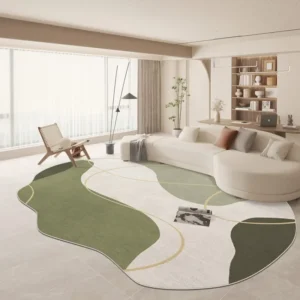 Large Area Green Rugs for Bedroom Nordic Living Room Decoration Shaped Carpet Irregular Plush Lounge Rug Home Thick Washable Mat
Rated 5.00 out of 5$54.94 – $346.41Price range: $54.94 through $346.41
Large Area Green Rugs for Bedroom Nordic Living Room Decoration Shaped Carpet Irregular Plush Lounge Rug Home Thick Washable Mat
Rated 5.00 out of 5$54.94 – $346.41Price range: $54.94 through $346.41 -
 Nordic Style Rugs for Bedroom Morandi Living Room Decoration Carpet Large Area Geometry Lounge Rug Home Cloakroom Non-slip Mat
Rated 5.00 out of 5$39.46 – $597.66Price range: $39.46 through $597.66
Nordic Style Rugs for Bedroom Morandi Living Room Decoration Carpet Large Area Geometry Lounge Rug Home Cloakroom Non-slip Mat
Rated 5.00 out of 5$39.46 – $597.66Price range: $39.46 through $597.66 -
 Irregular Shapes Living Room Decoration Carpet Modern Style Rugs for Bedroom Home Thicken Plush Rug Fluffy Soft Lounge Floor Mat
Rated 4.83 out of 5$55.84 – $347.37Price range: $55.84 through $347.37
Irregular Shapes Living Room Decoration Carpet Modern Style Rugs for Bedroom Home Thicken Plush Rug Fluffy Soft Lounge Floor Mat
Rated 4.83 out of 5$55.84 – $347.37Price range: $55.84 through $347.37

